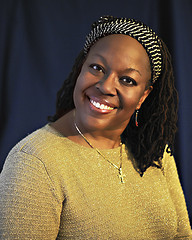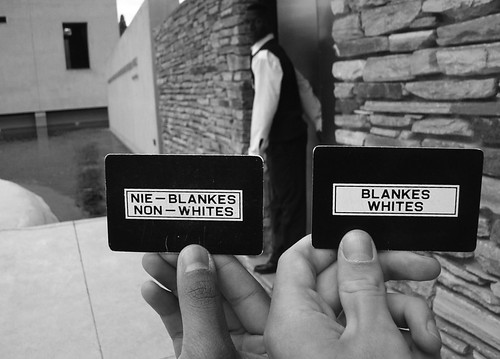I really thought that I was just bringing back some souvenir mugs. I had no idea that for my husband, one of the mugs would cause his skin to crawl as much as if he had awoken after having fallen asleep on an anthill. Let me explain.
The SouvenirLast August, during my trip to Cape Town, I had a wonderful opportunity to visit the Apartheid Museum there. I've already let you know how much South Africa means to me on an almost genetic level. But having the chance to visit the Apartheid Museum was a unique pleasure that I had not experienced on my previous trips to this rich land.
As usual, after going through an experience, such as this visit, that was strong enough to cause a tectonic shift in my consciousness, I sought to find ways to bring the memories home for me to relive as much as I could. Typically, when we think of souvenirs, what generally comes to mind are the silly trinkets that fill every gift shop in every tourist trap around the world: refrigerator magnets, t-shirts, pencil holders and ashtrays emblazoned with names of locales from Buffalo to Bora Bora. But when you remember that the root of the word souvenir is the verb to remember in French you can see how sometimes a souvenir can be more than a bobble-headed hula girl for your dashboard. There are times for all of us when all we want is to look/ hold/breathe in our souvenir so as to take us back to an experience that rocked our world. It was *this* type of souvenir that I wanted to find at the Museum.
I drank in as much as the museum had to offer about South Africa's full history and the birth and death of apartheid. It was heavy and awesome, not in the hipster version of the word, but the true definition of inspiring awe. I knew that I had to have something to take home, some souvenir, that would immediately allow me to relive this experience whenever I needed to.
The gift shop did not have any gifts that fell under the category of "to relive this profound experience buy this." Instead there were posters, t-shirts, bookmarks, and bracelets; just the usual items with no major surprises. Of course, there were no bobble-headed hula girls for sale.
I opted to purchase a bracelet with the words, "respect, equality, freedom" encircling it, in addition to the logo of the Apartheid Museum. I also found a magnetic paper clip topped with a quote from Papa Mandela:
"To be free is not merely to cast off one's chains but to live in a way that respects and enhances the freedom of others"
Boy did I love that! Yet what I found myself drawn to the most, and surprisingly so, were the mugs that had upon them some of the more hateful symbols of that past era. One mug in white read "Whites Only" in stark black text. The other in black with white text read, "Nonwhites Only." These were the apartheid versions of the Jim Crow signs from down South. They also mirrored the startling entry points to the museum itself.
You see, when you purchase your ticket to the museum, on the back of your entry ticket is your ethnic/racial designation for entrance. One entrance reads "Whites Only" and the other "Nonwhites Only." You are asked to enter the entrance that corresponds to your racial designation on your ticket.

Both entrances take you through a brief glimpse into the lives of those classified as white or nonwhite, depending on your door. There are old ID cards with designations listed as white, colored, or black. Also included are personal stories about how the classification was done and what effect it had on people's lives. What was both surprising and not so surprising was that the untrained people doing the classification were not geneticists or ethnologists, but mid-level bureaucrats imbued with the power to determine one's life caste simply by their visual assessment. Even those who were documented as being born to colored parents could be reclassified at the whim of these officials to black or Bantu, the lowest rung on the social ladder.
In my group of visitors to the museum, we were about evenly split between white and nonwhite. I could tell that many of my liberal white colleagues were a little uncomfortable about this in your face racial exercise lacking social nicety or the couching of the racial animus that we are more used to in present-day US society. Being asked to go through these entrances laid bare the dark and ugly that is a society divided by race.
(Note: You can view every article as one long page if you sign up as an Advocate Member, or higher).








